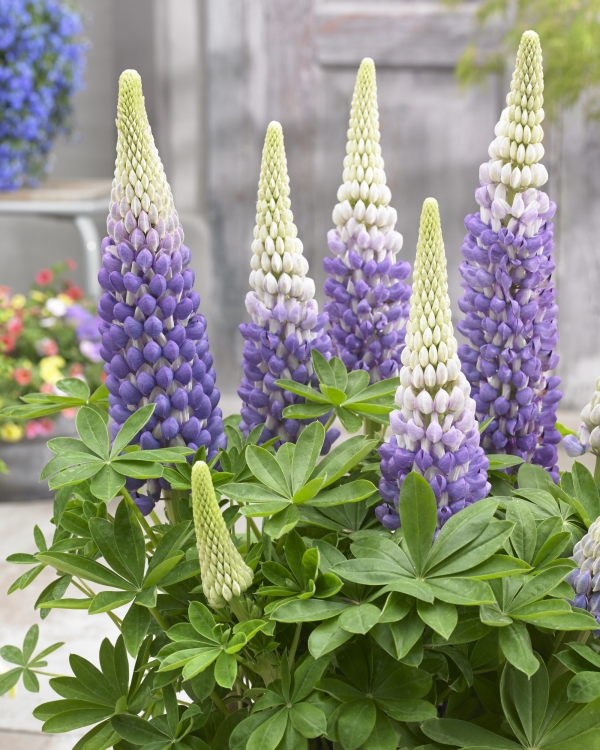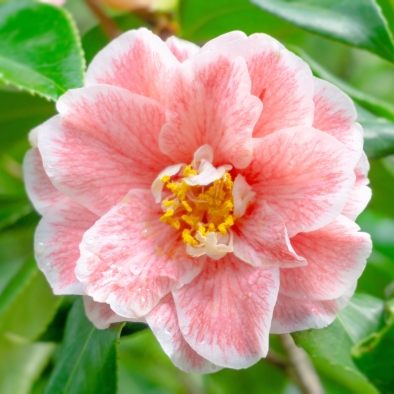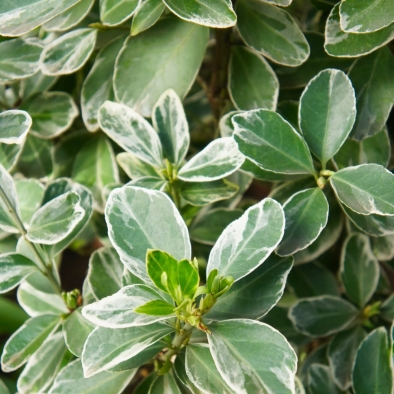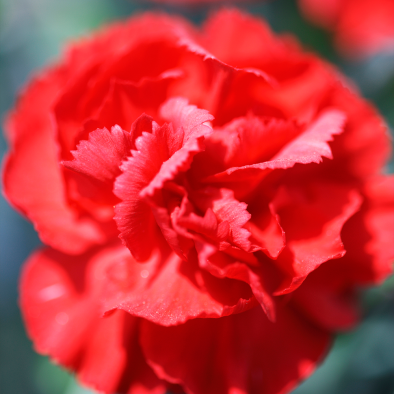
Type
- Herbaceous
- Deciduous perennial
Flowering time
- Summer
Flowering colour
- Violet Blue
- White
Position
- Full Sun
- Part Shade
Soil
- Loam, Sand tolerant
- PH acid, neutral
- Moist but well-drained
Hardiness
- Hardy in most places throughout the UK even in severe winters (-15 to -10)
- RHS Rating H5
Final height
- 90cm
Final spread
- 50cm
Suitable for
- Direct soil planting
- Large containers
Other
- Great in borders
- Clump forming
- Easy to grow
- Pollinator friendly
Human & pets interaction
- Potentially harmful
- Can cause indigestion if any part of the plant is eaten
Lupinus ‘West Country Persian Slipper’ (PBR) – 2 litre pot
Otter Price: £12.99
The Lupinus West Country ‘Persian Slipper’ is a stunning and elegant perennial that is sure to impress any gardener or flower enthusiast. This upright plant can reach a height of up to 90cm, making it a great option for gardeners looking to add some height and structure to their garden. The plant features divided green leaves that provide a beautiful backdrop for the main attraction – the flowers. From early summer, the ‘West Country Persian Slipper’ produces spikes of deep violet-blue and white flowers that rise above the foliage. It is also relatively low maintenance, making it an excellent option for gardeners who don’t have a lot of time or resources to devote to plant care.
Care Instructions:
– Plant in the spring. Avoid planting directly in the frozen soil.
– Container planting is possible throughout the year; use containers that are large and deep enough to prevent roots from freezing in the winter, and ensure there are drainage holes in the bottom of the container. Planted in small containers will lead to plants becoming rootbound.
– Water well after planting. Consistent moisture is critical for the initial establishment of lupins. Once the plants are established, they can tolerate drier soil conditions and require watering only during droughts. Avoid waterlogged conditions in winter.
– To encourage more blooms, remove faded flowers promptly. Deadheading after flowering will encourage growth and new flower production. Deadhead as the foliage begins to yellow towards late autumn or after the first frost.
– Feeding is not required during the first flowering season. Use balanced organic fertilisers to feed older plants in March/April and repeat in July/August.
– To keep the plants looking fresh, divide the clumps every 2 to 3 years.
Click for information
In stock





 Facebook
Facebook YouTube
YouTube Instagram
Instagram